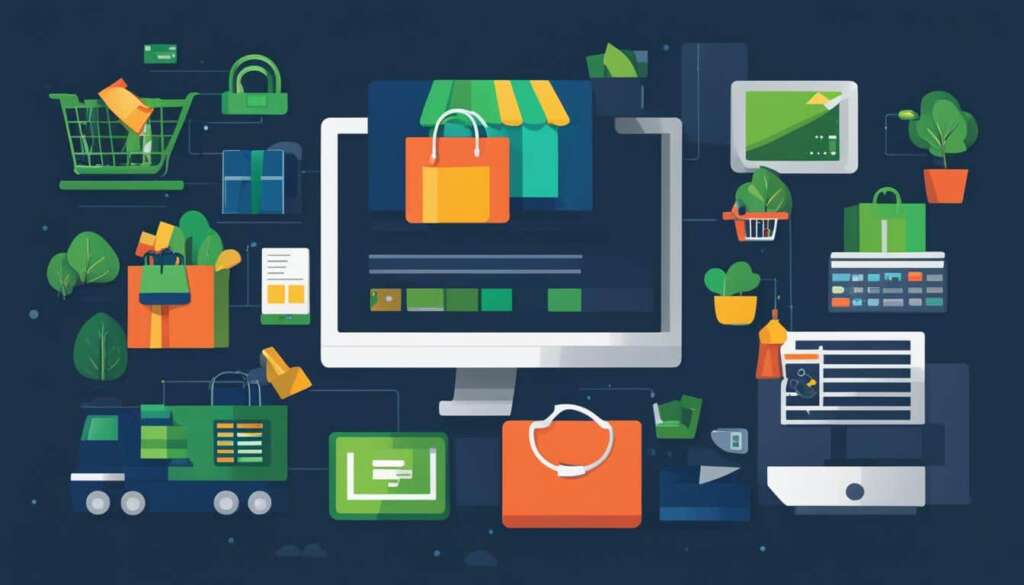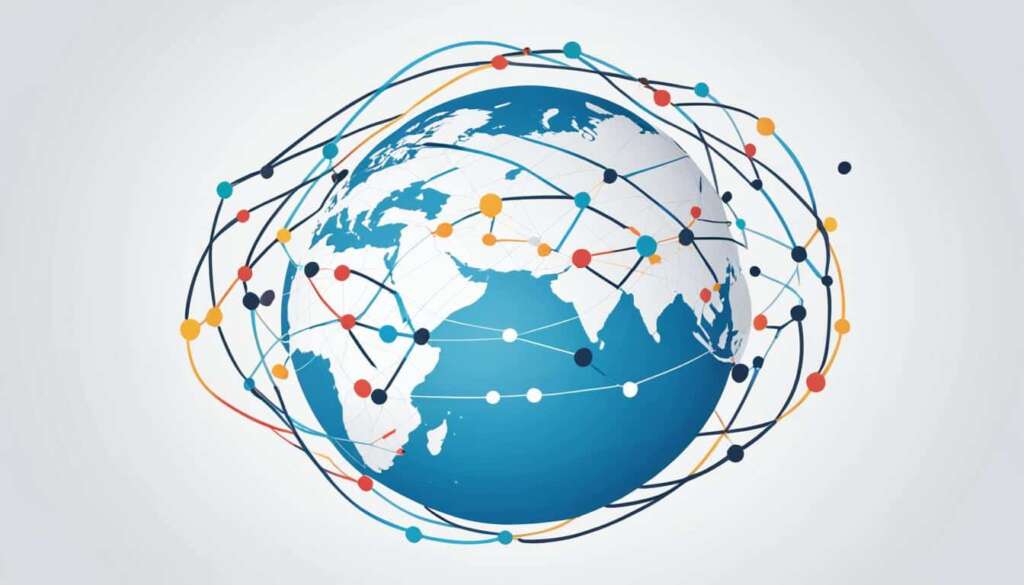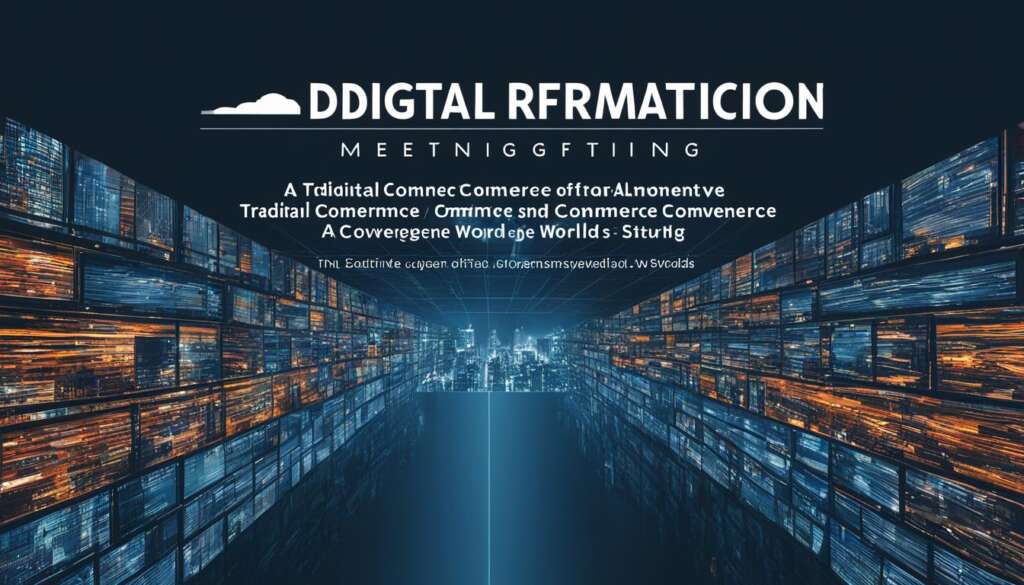Table of Contents
In today’s rapidly evolving business landscape, B2B e-commerce has emerged as a game-changer for companies seeking sustainable growth and a competitive edge. By leveraging the power of digital platforms, businesses can outperform competitors and thrive in the dynamic world of the digital marketplace.
With research indicating a significant shift towards digital self-service and remote engagement, B2B customers are embracing online channels to make substantial purchases. In fact, a considerable percentage of B2B buyers are willing to spend $500,000 or more in a single transaction. As a result, B2B e-commerce has emerged as one of the fastest-growing sales models, with a new generation of digital buyers permanently shifting their purchasing habits online.
In this comprehensive guide, we will delve into the concept of B2B e-commerce, explore the key differences between B2B and B2C strategies, and provide you with 19 essential strategies to excel in B2B e-commerce in 2023.
What is B2B E-Commerce?
B2B e-commerce, also known as business-to-business e-commerce, refers to the sale of products or services between businesses through an online sales portal. Unlike B2C (business-to-consumer) e-commerce, which involves transactions between businesses and individual consumers, B2B e-commerce focuses on facilitating sales between manufacturers, wholesalers, and distributors.
In the B2B e-commerce landscape, transactions are commonly conducted through various platforms, including company websites and online marketplaces. These online sales portals serve as a central hub where businesses can showcase and promote their products or services to potential buyers.
The rise of B2B e-commerce has seen exponential growth in recent years, as more and more businesses recognize the convenience and efficiency of digital transactions. The shift to online channels has become the new norm in the B2B realm, allowing manufacturers, wholesalers, and distributors to reach a wider audience and streamline their sales processes.
In the image, you can see how businesses engage in B2B transactions through an online sales portal, bridging the gap between manufacturers, wholesalers, and distributors. This visual representation highlights the importance of B2B e-commerce in today’s interconnected business landscape.
As B2B e-commerce continues to evolve, it offers businesses new opportunities to expand their reach, connect with potential customers, and streamline their sales processes. The convenience and accessibility of online sales portals empower businesses to thrive in an increasingly digital world, where connectivity and efficiency are key.
Difference Between B2B and B2C Strategy
B2B e-commerce strategy and B2C e-commerce strategy vary significantly due to the distinct audience and intent of the sale. In B2B transactions, the buying cycle is typically longer, involving larger budgets, more expensive purchases, and multiple stakeholders. This longer process allows B2B buyers to make informed purchasing decisions from a logical perspective, considering factors such as return on investment and long-term value.
Relationship building plays a vital role in B2B commerce. Establishing strong connections, trust, and credibility with clients and partners is crucial for successful B2B transactions. Building and maintaining these relationships requires time, effort, and effective communication to foster collaboration and mutual growth.
On the other hand, B2C e-commerce is more transactional and often driven by impulse or gut feeling. B2C buyers typically have shorter decision-making cycles and tend to prioritize convenience and personal satisfaction in their purchasing decisions.
“The logic of business-to-business is far more complex than business-to-consumer. In B2B transactions, emotional factors may still come into play, but the decision-making process is typically driven by rationality and strategic considerations.”
It is worth noting that B2B e-commerce is being influenced by the convenience and features of B2C e-commerce. B2B buyers now expect seamless online experiences, personalized interactions, and intuitive interfaces that align with their B2C experiences. As a result, B2B businesses must adapt their e-commerce strategies to meet these higher expectations and provide a user-friendly, customer-centric online platform.
Comparison between B2B and B2C Strategies:
| Aspect | B2B Strategy | B2C Strategy |
|---|---|---|
| Buying Cycle | Longer | Shorter |
| Budgets | Larger | Varied |
| Purchase Decision Factors | ROI, long-term value | Convenience, personal satisfaction |
| Stakeholders | Multiple | Individual |
| Relationship Building | Crucial | Less Emphasized |
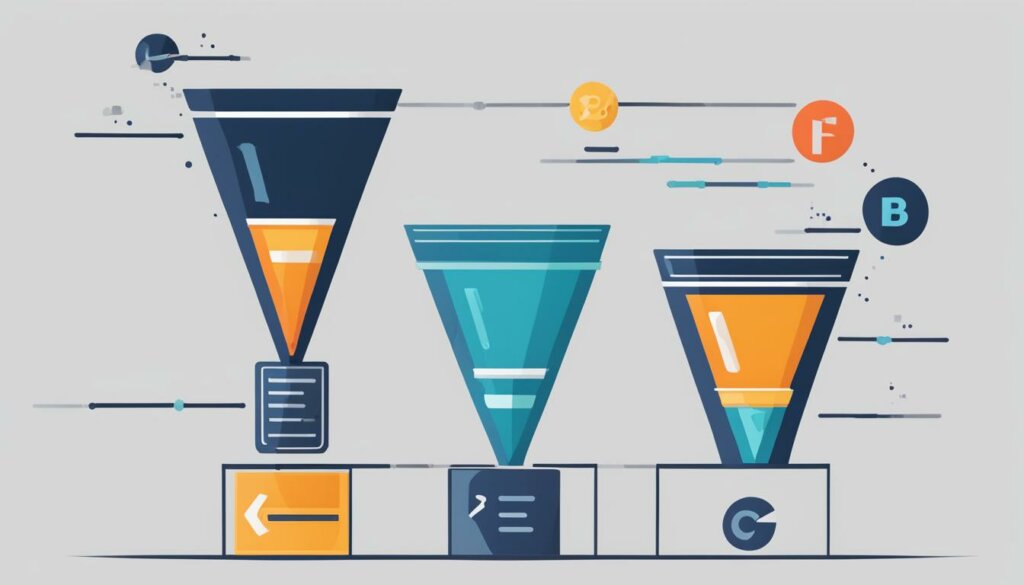
Understanding the differences between B2B and B2C strategies is essential for businesses operating in the e-commerce landscape. By adopting a tailored approach and considering the unique needs and expectations of B2B buyers, companies can develop effective B2B e-commerce strategies that foster relationship-building and drive informed, mutually beneficial transactions.
How to Find New Customers and Increase Sales in B2B
When it comes to B2B, finding new customers and increasing sales is a top priority for businesses. To achieve this, implementing effective marketing strategies and utilizing various techniques can make a significant difference. Let’s explore some key tactics that can help B2B companies attract new customers and boost sales:
-
Define the Ideal Customer Profile and Buyer Personas
Before diving into any marketing efforts, it’s important to have a clear understanding of who your target audience is. Define your ideal customer profile and create buyer personas that will guide your marketing strategies. This will help you tailor your messaging and offerings to attract the right customers.
-
Turn Your Website into an Educational Hub
A website that serves as an educational hub can be a powerful tool for attracting and engaging new customers. Provide valuable content such as blog articles, whitepapers, case studies, and webinars that address the pain points and challenges faced by your target audience. This positions your business as a knowledgeable industry leader.
-
Offer Discounts and Promotions
Everybody loves a good deal. Offering discounts and promotions can encourage new customers to make a purchase and also incentivize existing customers to refer others. Create limited-time offers or exclusive discounts for first-time buyers to create a sense of urgency and drive immediate sales.
-
Create a Referral Program
Word-of-mouth referrals are incredibly powerful in the B2B world. Implementing a referral program encourages your existing customers to recommend your products or services to their peers. Consider offering incentives to both the referrer and the new customer, such as discounts or rewards, to motivate participation.
-
Embrace Search Engine Optimization (SEO) Strategies
Optimizing your website for search engines is essential for increasing visibility and attracting organic traffic. Conduct keyword research to understand the terms and phrases your target audience is using. Incorporate these keywords naturally into your website’s content, meta tags, and headlines to improve your search engine rankings and generate more leads.
-
Utilize CRM Software for Effective Lead Generation
A Customer Relationship Management (CRM) software can streamline your lead generation efforts and help you manage customer interactions more efficiently. It allows you to track leads, nurture relationships, and identify sales opportunities. Implementing a CRM system ensures that no potential customer falls through the cracks.
By implementing these strategies, B2B companies can effectively find new customers and increase sales. Remember, it’s crucial to continuously analyze and optimize your marketing efforts to achieve sustainable growth in today’s competitive landscape.
| Method | Description |
|---|---|
| Define the Ideal Customer Profile and Buyer Personas | Develop a clear understanding of your target audience to tailor your marketing efforts accordingly. |
| Turn Your Website into an Educational Hub | Create valuable content that addresses your audience’s pain points and establishes your business as a thought leader. |
| Offer Discounts and Promotions | Entice new customers and incentivize referrals by offering limited-time discounts and promotions. |
| Create a Referral Program | Motivate existing customers to refer others by providing rewards or incentives for successful referrals. |
| Embrace Search Engine Optimization (SEO) Strategies | Optimize your website to improve visibility in search engine results and attract organic traffic. |
| Utilize CRM Software for Effective Lead Generation | Streamline your lead generation efforts and manage customer interactions efficiently with CRM software. |
Key Technologies Used in B2B Ecommerce
In the world of B2B e-commerce, various technologies play a pivotal role in facilitating transactions and enhancing the overall customer experience. These technologies are tailored to meet the unique needs and complexities of business-to-business interactions. Let’s delve into the key technologies that underpin B2B e-commerce:
Ecommerce Platform
An ecommerce platform serves as the foundation for B2B online sales. It provides businesses with the necessary tools and infrastructure to showcase their products or services, manage customer accounts, process orders, and track inventory. Notable examples of popular ecommerce platforms include Shopify Plus, Magento Commerce, and BigCommerce.
ERP System
An Enterprise Resource Planning (ERP) system centralizes and streamlines a company’s core business processes, including inventory management, order fulfillment, and financial management. By integrating the ERP system with the ecommerce platform, businesses can ensure accurate inventory levels, automate order processing, and maintain seamless operations.
Customer Relationship Management System
A Customer Relationship Management (CRM) system helps businesses effectively manage customer interactions, from prospecting to acquisition and post-sales support. By capturing and analyzing customer data, CRM systems enable personalized marketing campaigns, targeted communication, and enhanced customer service. Widely used CRM platforms are Salesforce, HubSpot, and Zoho CRM.
Electronic Funds Transfer
Electronic Funds Transfer (EFT) allows businesses to electronically transfer funds from one bank account to another. This secure and efficient method simplifies payment processes and reduces the reliance on traditional payment methods, such as checks and cash. B2B transactions can be completed seamlessly using EFT.
Electronic Data Interchange
Electronic Data Interchange (EDI) enables the electronic exchange of business documents, including purchase orders, invoices, and shipping notices, between trading partners. EDI eliminates the need for manual data entry, reduces errors, and expedites the order-to-cash cycle. It promotes seamless collaboration and integration between B2B systems.
Online Transaction Processing
Online Transaction Processing (OLTP) systems handle and manage real-time transactional data, ensuring the immediate and accurate processing of orders, payments, and other essential activities. By leveraging OLTP systems, B2B businesses can provide a seamless and responsive purchasing experience to their customers.
Supply Chain Management System
A Supply Chain Management (SCM) system optimizes the flow of goods, services, and information across the entire supply chain network. It encompasses key activities such as inventory management, demand forecasting, order fulfillment, and logistics coordination. SCM systems enable businesses to enhance efficiency, reduce costs, and maintain optimal inventory levels.
Inventory Management System
An Inventory Management System ensures that businesses have sufficient stock levels to meet customer demand, while minimizing excess inventory and associated costs. This system allows businesses to track and manage inventory throughout the supply chain, ensuring accurate stock counts and efficient order fulfillment.
Mobile Commerce
With the rise of smartphones and tablets, mobile commerce has become a crucial component of B2B e-commerce. Mobile commerce refers to the ability to conduct business transactions through mobile devices. B2B businesses can leverage mobile commerce to reach a wider audience, provide a seamless mobile shopping experience, and facilitate on-the-go transactions.
Artificial Intelligence
Artificial Intelligence (AI) technologies, such as machine learning and natural language processing, have revolutionized B2B e-commerce. AI-powered systems can analyze vast amounts of data, provide personalized product recommendations, automate customer service interactions, and optimize pricing strategies. Companies like Amazon and Alibaba utilize AI to enhance their B2B e-commerce platforms.
These key technologies serve as the backbone of B2B e-commerce, enabling businesses to streamline operations, enhance customer experiences, and drive growth. By leveraging the power of these technologies, B2B companies can stay ahead of the competition in the rapidly evolving digital landscape.
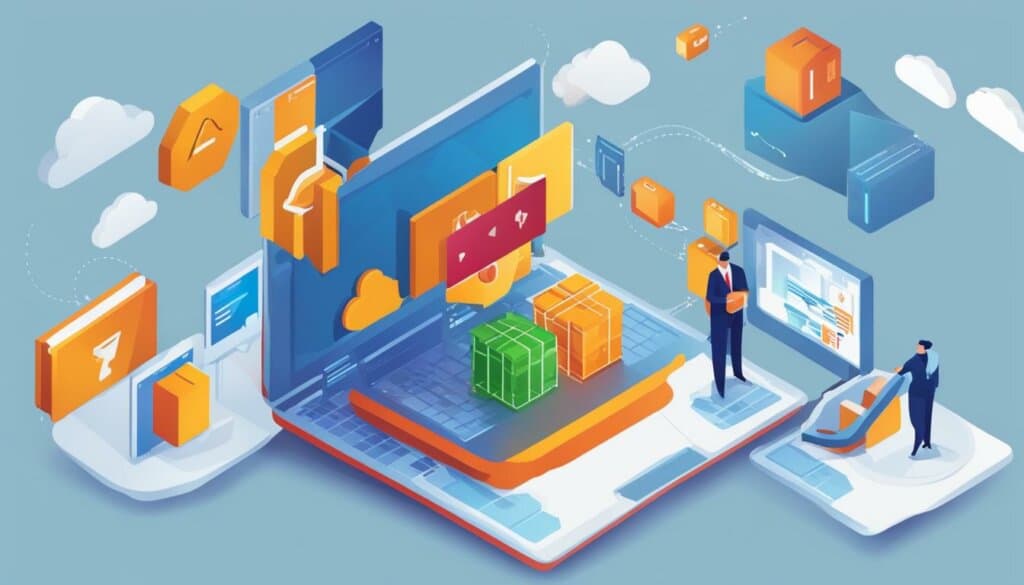
“The integration of advanced technologies in B2B e-commerce transforms the way businesses interact and transact, paving the way for increased efficiency and better customer experiences.”
– Industry Expert
Conclusion
In conclusion, B2B e-commerce is experiencing rapid growth and presents significant opportunities for businesses. By implementing essential strategies such as optimizing website speed, utilizing conversion rate optimization techniques, offering flexible payment options, and prioritizing customer service, B2B businesses can drive sustainable growth and outperform competitors in the digital marketplace.
It is essential for B2B companies to adapt to the changing landscape of e-commerce and continually refine their strategies to meet the evolving needs of B2B buyers. By staying ahead of the curve and leveraging the power of technology, B2B businesses can attract new customers, increase sales, and build strong relationships with their clients.
As the world becomes increasingly digital, B2B e-commerce provides a cost-effective and efficient way for businesses to connect and transact with their peers. By embracing the digital transformation and harnessing the power of B2B e-commerce, companies can unlock new opportunities and position themselves for long-term success in the digital marketplace.
FAQ
What are B2B e-commerce strategies?
B2B e-commerce strategies are tactics and approaches used by businesses to drive sustainable growth and outperform competitors in the digital marketplace. These strategies include optimizing website speed, utilizing conversion rate optimization techniques, offering flexible payment options, and prioritizing customer service.
What is B2B e-commerce?
B2B e-commerce refers to the sale of products or services between businesses through an online sales portal. These sales occur between manufacturers, wholesalers, and distributors, typically through company websites and online marketplaces.
How does B2B e-commerce differ from B2C e-commerce?
B2B e-commerce differs from B2C e-commerce in terms of audience and intent. B2B transactions have a longer buying cycle and involve larger budgets, more expensive purchases, and multiple stakeholders. Relationship building is crucial in B2B commerce. In contrast, B2C e-commerce is more transactional and based on gut feeling.
How can I find new customers and increase sales in B2B?
In B2B, finding new customers and increasing sales can be achieved through various strategies. These include turning the website into an educational hub, offering discounts and promotions, creating a referral program, embracing SEO strategies, increasing visibility, utilizing CRM software, and optimizing lead generation.
What are the key technologies used in B2B e-commerce?
Key technologies used in B2B e-commerce include an ecommerce platform, enterprise resource planning system, customer relationship management system, electronic funds transfer, electronic data interchange, online transaction processing, supply chain management system, inventory management system, mobile commerce, and artificial intelligence.




